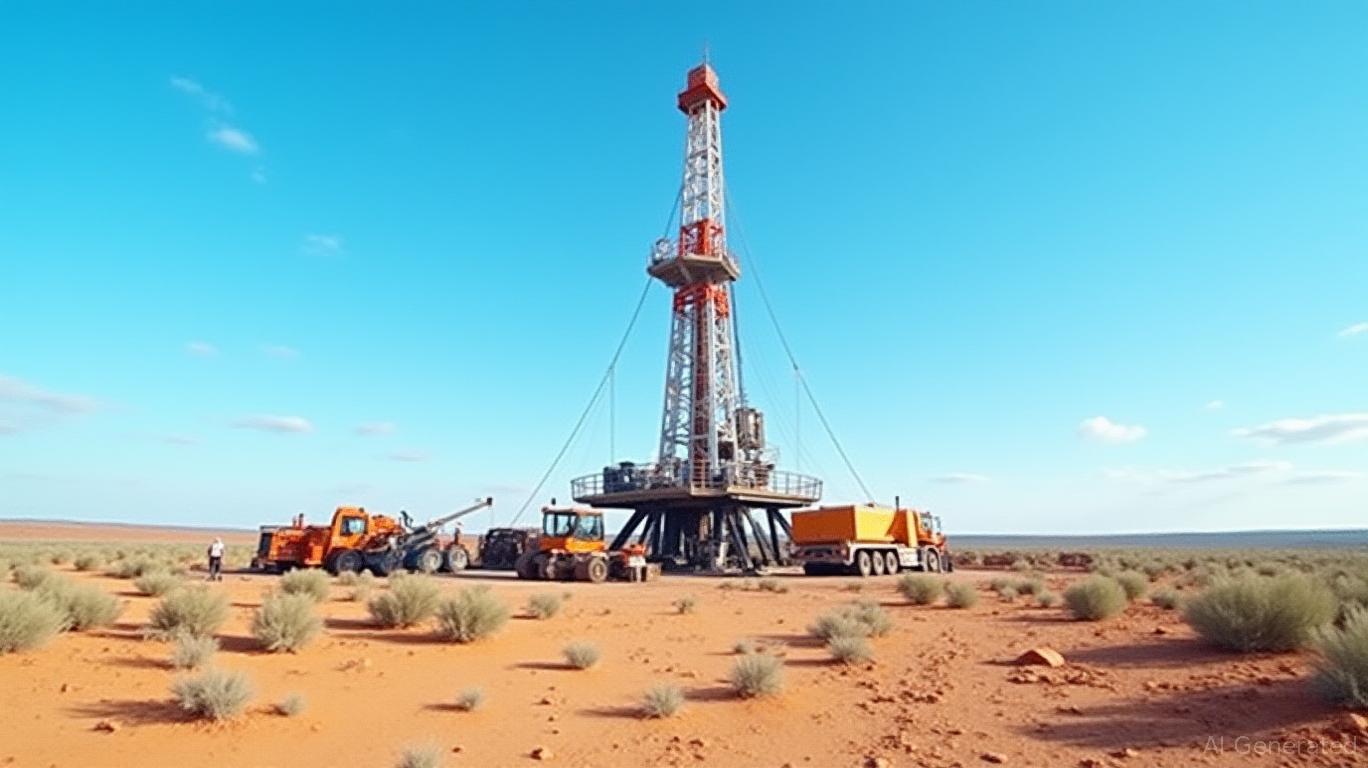Tamboran Resources: PIPE Financing and the Crucible of Shareholder Approval
The energy transition is reshaping global markets, but one overlooked player is positioning itself to capitalize on a critical gap: natural gas production in Australia's Beetaloo Basin.
(TBR), a leading explorer in this underdeveloped shale province, now faces a pivotal moment. Its recently announced second tranche of a $55.4 million PIPE financing, requiring shareholder approval on August 18, 2025, could unlock its path to commercial production by mid-2026. Success hinges on two factors: approval of this financing and execution of drilling for the Shenandoah South Pilot Project. Investors who recognize the strategic calculus here may find themselves in a rare position to profit from a company at an inflection point.The PIPE Financing: A Lifeline for Beetaloo's Potential
The second tranche of Tamboran's Private Investment in Public Equity (PIPE) financing is not merely a capital raise—it's a strategic imperative. The $55.4 million raise, priced at $17.74 per share, will fund three critical initiatives:
1. Drilling the final three wells for the 40 MMcf/d Pilot Project at Shenandoah South.
2. Funding the Sturt Plateau Compression Facility until debt terms are finalized with lenders.
3. Maintaining operational liquidity as Tamboran advances toward LNG export partnerships, such as its collaboration with Daly Waters Energy (DWE) and pre-FEED work with Bechtel for the NTLNG project.

The stakes are high. Without shareholder approval, Tamboran risks delaying its 2026 production target—a delay that could erode its competitive edge as global LNG demand surges. The structure of the PIPE, however, is designed to mitigate risks. Affiliated entities like Formentera Partners (founded by CEO Bryan Sheffield) and directors are contributing $11 million of the tranche, signaling confidence in Tamboran's vision. Non-affiliated investors are committing an additional $5.7 million, further validating the opportunity.
Regulatory and Operational Risks: Manageable, Not Insurmountable
Critics will point to risks: regulatory hurdles, weather delays, and the ever-present uncertainty of natural gas prices. Yet Tamboran's strategy is deliberately buffered against these variables:
- Regulatory Approval: The Beetaloo Basin has been subject to scrutiny over water usage and seismic activity. However, Tamboran has engaged in extensive environmental studies and adhered to Northern Territory regulations, which have already greenlit initial exploration. The Pilot Project's smaller scale reduces the risk of a full-scale regulatory shutdown.
- Weather Delays: While weather could push back drilling timelines, the mid-2026 target allows flexibility—especially given the basin's dry season (April–October), when drilling is most efficient.
- Gas Price Volatility: Tamboran's long-term contracts with DWE and potential LNG partners will stabilize revenue streams, insulating the company from short-term price swings.
The bigger threat? A failed shareholder vote. Without the August 18 approval, Tamboran's capital stack weakens, and its ability to fund drilling—the linchpin to production—falters.
The Path to Commercialization: A Clear Roadmap
Tamboran's timeline is tightly aligned with the financing milestones:
1. August 2025: Shareholder approval of the second tranche.
2. Q4 2025–Q1 2026: Drilling completion and facility construction.
3. Mid-2026: First production, with a ramp-up to 40 MMcf/d by year-end.
The NTLNG project, which aims to export LNG from Darwin, adds a transformative dimension. Pre-FEED work with Bechtel suggests Tamboran is already laying groundwork for a full-scale liquefaction facility, potentially turning it into a midstream-to-export powerhouse.
Why Act Now? The Case for Immediate Investment
The window to capitalize on Tamboran's upside is narrowing. Here's why acting ahead of the August shareholder vote makes sense:
1. Asymmetric Risk-Reward: The PIPE's success offers a high-reward, low-risk entry point. If approved, Tamboran's shares could surge as production timelines solidify. If rejected, the downside is already partially priced into the stock.
2. Leverage to LNG Demand: Global LNG prices are forecast to rise as Asian economies rebound and European storage levels dip. Tamboran's proximity to Asia via Darwin's port positions it to capture premium pricing.
3. Technical Catalysts: The drilling results from Shenandoah South, expected in late 2025, could act as a second catalyst, driving further upside if initial production rates meet expectations.
Conclusion: The August Vote is the Catalyst—Don't Miss It
Tamboran Resources stands at a binary crossroads. Approval of the second tranche will propel it toward production, LNG exports, and a seat at the table of Australia's energy renaissance. A rejection, however, would cast doubt on its viability. For investors, this is a rare “all-in” opportunity at a valuation that reflects only Tamboran's current state, not its potential.
The data is clear: TBR's cash reserves are sufficient to survive until mid-2026, but the second tranche ensures it can thrive. With shareholder approval looming, the time to act is now.
DISCLAIMER: This analysis is for informational purposes only. Investors should conduct their own due diligence and consult with a financial advisor before making decisions.

Comments
No comments yet